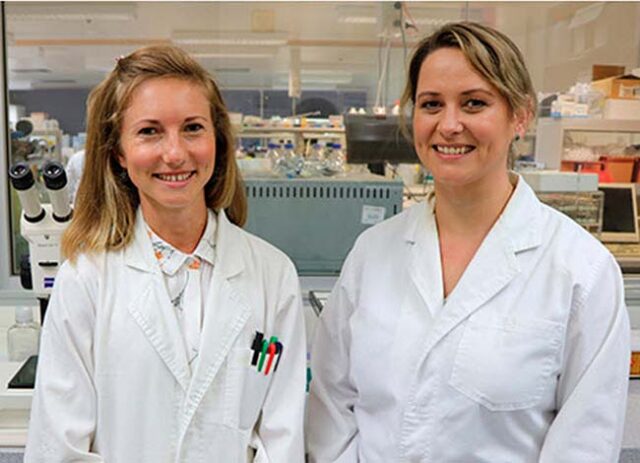By Gemma Alexander and Adriana van Tilburg
Photography: University of Newcastle and Roslyn Neave
University of Newcastle (Australia) scientist’s Dr Zamira Gibb and Dr Aleona Swegen have spent upwards of eight years developing a revolutionary new method to preserve horse semen that allows it to live for up to two weeks post-collection at ambient temperatures.
The processes of chilling and freezing sperm have many detrimental effects on its fertility, and once thawed there is only a very limited window of time in which insemination must take place before the sperm becomes unviable. This new medium has been given the moniker ‘NEW’ extender, as both a nod to the University of Newcastle, as well as the fact it is… well… new.
Dr Zamira Gibb’s background is in animal science; while working at the University of Newcastle, the university was approached by Harness Racing Australia about doing some work on improving semen storage options. Their main concern was that the quality of Standardbred horses in Australia was lacking behind those in America and France, and other countries where the industry is stronger. The use of frozen semen had not been widely adopted by the harness racing community in Australia due to the high costs and poor fertility rates, so they had found that the most effective way of bringing in new genetics was to shuttle stallions from one continent to another. What they were hoping could be achieved was the development of a medium for preserving sperm that was devoid of any biological components (egg yolk and skim milk are both common components of currently used semen extenders), as removing such biological components would reduce a number of issues faced in the importation of such a medium. And so, the project was born, with the aim of developing a medium in which sperm could be stored for longer periods of time without freezing, without compromising fertility, that was logistically simpler to use and that was devoid of any biological material (besides the sperm itself).
Dr Aleona Swegen is a veterinarian who was working in Australia’s Hunter Valley when the opportunity came up for her to further her studies with the University of Newcastle. A key component of her PHD was looking at sperm metabolisms in stallions, and particular mechanisms that could be beneficial for sperm survival. Due to the potential benefits for the semen extender project, Dr Ally came on board with the study. A breakthrough came when they determined how to alter the semen metabolism in such a way that the sperm used up its energy more slowly, over a longer period of time. They continued to chip away at the research, and ended up with something with the potential to be quite transformative.
This was not the first time interested parties had attempted to chill sperm for longer periods of time, however with most previous attempts people were simply taking existing extenders and trying to chill it at different temperatures. This never turned out to be successful, as a number of the ingredients that are beneficial to the sperm at low temperatures turned out to be deleterious at higher temperatures.
Dr Zamira Gibb explains how they formulated their study: “We basically started with a very simple medium that you’d use in the lab for experiments, so something that sperm are supposed to be incubated at body temperature in, so similar to your IVF kind of medium, which was nothing like the sperm storage media (the commercial ones), but we basically just built on that, and did some boring but necessary empirical studies where we sort of go “right, it’s got an energy source in it, let’s try all of the energy sources at a range of concentrations, and narrow it down”.
It takes a lot of time to do that work but it’s really necessary to get the right formulation at the end of the day. And we had a couple of really serendipitous findings, so a few of the ingredients that we thought would maybe do bad things to sperm, we found did good things to the sperm, so we were actually using them for different reasons, and found that they had completely different effects. And a lot of Ally’s work was based around that. So, with the metabolism work, things we thought would inhibit metabolic pathways act-ually just made them live longer, so that was very useful!”
The extender has undergone a small amount of fertility trials, with larger-scale trials planned for the future in con-junction with a group of Standardbred breeders in Victoria, Australia. Based on the initial studies, fertility of semen using the new extender is seen to be on par with natural breeding conception rates, considerably higher than the average rates for artificial insemination using chilled or frozen sperm... To read the complete article you need to be a subscriber
CLICK HERE TO SUBSCRIBE TO BREEDING NEWS
SUBSCRIBERS CAN READ THE COMPLETE ARTICLE BY LOGGING IN AND RETURNING TO THIS PAGE




